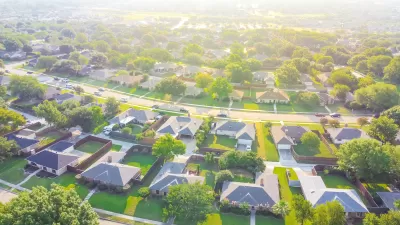A review of two books about the American housing crisis — one tailored to liberal readers, another tailored to conservative readers.

Over the past week, I read two short, easy-to-read books designed to explain YIMBYism* to a non-academic audience. Unlike many other books on housing I have read, both books seem tailored to appeal to an ideological audience. In On The Housing Crisis, journalist Jerusalem Demsas explains why liberals should support less zoning and more housing. In Nowhere To Live, attorney James Burling does the same for conservative readers.
In addition to discussing housing generally, Demsas focuses on issues of special interest to progressives, such as gentrification, homelessness, and clean energy. But what I found most interesting about Demsas’ book is that she takes the trouble to respond to at least some anti-housing arguments.
For example, one common argument for zoning is that it reflects the will of local voters, and is thus more democratic than a more laissez-faire land use system. Demsas criticizes this argument on two grounds. First, zoning involves what Demsas calls a “collective action” problem. It is the interest of each individual neighborhood or town to exclude, but it is in the interests of a city or region as a whole to keep housing abundant. People often perceive that housing construction near them may have negative side effects such as noise. Thus, it may be in the interest of each “individual [municipal] government to say to its neighbor- ‘You can have all the apartments- we’ll just keep our parks.’” But when many neighborhoods or suburbs do this, housing becomes scarce and thus expensive. Thus, zoning actually gives people what they don't want (housing scarcity). Second, local “community input” is not democratic because it does not represent the local population. Demsas points out that people who show up at zoning-related public meetings are usually “white, affluent homeowners.”
She also discusses left-wing attempts to blame large investors for high housing costs. Demsas points out that institutional investors purchased just 3 percent of homes in 2021, and that 3 percent of home sales are still a very small proportion of the total housing stock, because most homes are not for sale at any one time. Moreover, the states with the highest level of investor activity are not the most expensive states, suggesting that investor activity is not a major factor in housing prices. Demsas cites one document suggesting that investors “bought 42.8 percent of homes for sale in the Atlanta metro area”- but points out that this statistic refers to all investors (including “mom and pop” investors like my mother, who owned several rental homes through an limited liability company).
A more frivolous argument is that the housing crisis has nothing to do with homelessness, because homeless people are generally insane or drug-addicted and thus unhousable. If this was true, the places with the highest levels of mental illness or drug overdose deaths would have the highest levels of homelessness. But Demsas points out that homelessness correlates more strongly with housing costs than with drug overdoses: places with high rents tend to have lots of homeless people.
Burling’s book focuses on property rights and on the 20th-century trend toward more and more government interference with property rights. Perhaps because of his legal background, Burling (unlike Demsas) discusses zoning-related case law in detail. And unlike Demsas, Burling also criticizes regulations favored by liberals, such as rent control and inclusionary zoning. He argues that by making it less profitable to be a developer or landlord, these policies reduce housing supply.
He goes further afield by attacking environmental laws such as the Endangered Species Act and wetlands regulation; I'm not quite as persuaded by his arguments on these issues. He argues that federal regulators have overreached, but he doesn’t really explain in detail whether these laws have a significant effect on housing supply. Nevertheless, Burling’s anti-regulatory slant undoubtedly makes his book more appealing to conservative readers. Thus, Burling’s book fills a gap in the literature: it is designed to be more appealing to conservative readers than other pro-housing books, and is less scholarly and economics-oriented than some other libertarian-oriented books on land use (such as Scott Beyer’s Market Urbanism and Alain Bertaud’s Order Without Design).
*An acronym for “Yes In My Back Yard” — in particular, the idea that land use regulations should be modified in order to allow increased housing supply and lower rents.

Trump Administration Could Effectively End Housing Voucher Program
Federal officials are eyeing major cuts to the Section 8 program that helps millions of low-income households pay rent.

Planetizen Federal Action Tracker
A weekly monitor of how Trump’s orders and actions are impacting planners and planning in America.

Ken Jennings Launches Transit Web Series
The Jeopardy champ wants you to ride public transit.

Driving Equity and Clean Air: California Invests in Greener School Transportation
California has awarded $500 million to fund 1,000 zero-emission school buses and chargers for educational agencies as part of its effort to reduce pollution, improve student health, and accelerate the transition to clean transportation.

Congress Moves to End Reconnecting Communities and Related Grants
The House Transportation and Infrastructure Committee moved to rescind funding for the Neighborhood Equity and Access program, which funds highway removals, freeway caps, transit projects, pedestrian infrastructure, and more.

From Throughway to Public Space: Taking Back the American Street
How the Covid-19 pandemic taught us new ways to reclaim city streets from cars.
Urban Design for Planners 1: Software Tools
This six-course series explores essential urban design concepts using open source software and equips planners with the tools they need to participate fully in the urban design process.
Planning for Universal Design
Learn the tools for implementing Universal Design in planning regulations.
Heyer Gruel & Associates PA
Ada County Highway District
Institute for Housing and Urban Development Studies (IHS)
City of Grandview
Harvard GSD Executive Education
Toledo-Lucas County Plan Commissions
Salt Lake City
NYU Wagner Graduate School of Public Service






























